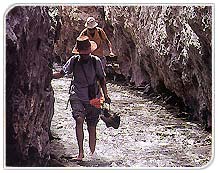Ladakh Travel Guide
---------------------------------------------------------------------------------------------------------------------------------------------------------------------------------------------------------------------------------
Ladakh Home » About Ladakh Travel Guide » Religion & Culture » Historical Background » Ancient Routes » Modern Routes
Central Ladakh » Fairs & Festivals » Oracles & Astrologers » Arts & Crafts » Cultural Tourism » Archery & Polo » Adventure in Ladakh
The New Areas » Tourist Information » Air Line Ticketing » Car Coach Rentals In Ladakh
Travel Agents & Tour Operators in Ladakh » Hotels & Resorts in Ladakh » Map »Travellers Tools
---------------------------------------------------------------------------------------------------------------------------------------------------------------------------------------------------------------------------------
Ladakh Home » About Ladakh Travel Guide » Religion & Culture » Historical Background » Ancient Routes » Modern Routes
Central Ladakh » Fairs & Festivals » Oracles & Astrologers » Arts & Crafts » Cultural Tourism » Archery & Polo » Adventure in Ladakh
The New Areas » Tourist Information » Air Line Ticketing » Car Coach Rentals In Ladakh
Travel Agents & Tour Operators in Ladakh » Hotels & Resorts in Ladakh » Map »Travellers Tools
---------------------------------------------------------------------------------------------------------------------------------------------------------------------------------------------------------------------------------
Ancient Routes
 For
all its seeming inaccessibility, Ladakh's position at the centre of a network
of trade routes traditionally kept it in constant touch withthe outside world.
From Chinese Central Asia,the mighty Karakoram range was breached at the Karakoram
pass, a giddy 18,350 feet (5,600m). The trail from Yarkand crossed five other
passes, of which the most feared was the glacier, encumbered Saser-la, north
of Nubra. Travellers from Tibet could take one of two main routes. From the
central part of the country, the Tsang-po valley, they could pass the holy
sites of Kailash-Mansarovar and reach Fartok, on a tributary of the upper
Indus, from where they followed the river down to Leh.
For
all its seeming inaccessibility, Ladakh's position at the centre of a network
of trade routes traditionally kept it in constant touch withthe outside world.
From Chinese Central Asia,the mighty Karakoram range was breached at the Karakoram
pass, a giddy 18,350 feet (5,600m). The trail from Yarkand crossed five other
passes, of which the most feared was the glacier, encumbered Saser-la, north
of Nubra. Travellers from Tibet could take one of two main routes. From the
central part of the country, the Tsang-po valley, they could pass the holy
sites of Kailash-Mansarovar and reach Fartok, on a tributary of the upper
Indus, from where they followed the river down to Leh. Trade with the pashm producing areas of western Tibet flowed by a more northerly route, taking in the village of Rudok, a few miles into Tibet, and from there across the 18,300 feet (5,578m ) Chang-la to the Indus, and so to Leh.
Baltistan, joined administratively with Ladakh for 100 years, was linked to it either via the Indus up to its confluence with the Suru-Shingo river, and on up to Kargil; or by the Chorbat-la pass over the Ladakh range, the trail dropping down to the Indus 40 km below Khalatse, and following the river up to Leh.
The two main approaches toLadakh from south of the Himalaya are roughly the same as today's motor roads from Srinagar and Manali. The merchants and pilgrims who made up the majority of travellers in the premodern era, travelled on foot or horseback, taking about 16 days to reach Srinagar; though a man in hurry, riding non-stop and with changes of horse arranged ahead of time all along the route, could do it in as little as three days.
The mails, carried in relays by runners stationed every four miles or so, took four or five days. That was before the wheel as a means of transport was introduced into Ladakh, which happened only when the Srinagar- Leh motor-road was constructed as recently as the early 1960s.
Ladakh Home »
About Ladakh Travel
Guide » Religion
& Culture » Historical
Background » Ancient
Routes » Modern
Routes
Central Ladakh » Fairs & Festivals » Oracles & Astrologers » Arts & Crafts » Cultural Tourism » Archery & Polo » Adventure in Ladakh
The New Areas » Tourist Information » Air Line Ticketing » Car Coach Rentals In Ladakh
Travel Agents & Tour Operators in Ladakh » Hotels & Resorts in Ladakh » Map »Travellers Tools
Central Ladakh » Fairs & Festivals » Oracles & Astrologers » Arts & Crafts » Cultural Tourism » Archery & Polo » Adventure in Ladakh
The New Areas » Tourist Information » Air Line Ticketing » Car Coach Rentals In Ladakh
Travel Agents & Tour Operators in Ladakh » Hotels & Resorts in Ladakh » Map »Travellers Tools